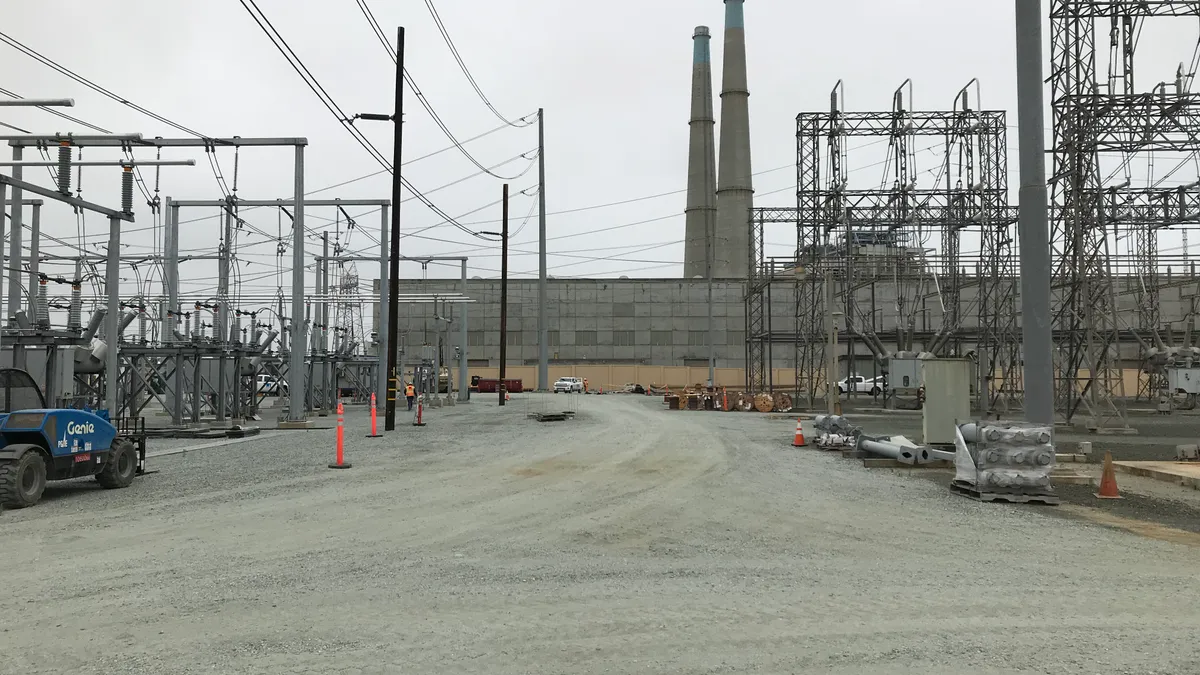Dive Brief:
- The California Public Utilities Commission (CPUC) on Thursday voted to authorize the procurement of 3,300 MW of clean energy by 2023, while seeking extensions for almost 4,800 MW of gas generation units due to close in the next year.
- Regulators directed the state's utilities and community choice aggregators (CCAs) to add incremental clean energy capacity through clean sources like hybrid solar and storage or standalone storage systems. Extending several natural gas units is a "bridge strategy to allow new [clean energy] capacity to come online," the CPUC wrote.
- While clean energy and storage advocates celebrated the move to add a large amount of clean resources, Vote Solar wrote on Friday about possibly appealing the extension of the gas plants. The State Water Resources Control Board still needs to extend the once-through-cooling compliance deadlines for the designated gas units from December 31, 2020.
Dive Insight:
California is working to increase the reliability of its electric grid. Regulators decided 3,300 MW of incremental system resource adequacy and renewables integration is needed by the summer peaks in 2021, and extending the life of natural gas plants would create an achievable timeline to bring on that generation.
At least 50% of the new resources must be online by Aug. 1, 2021, with 75% by Aug. 1, 2022 and the full amount on Aug. 1, 2023.
Investor-owned utilities (IOUs) have been directed to add new capacity as well as a set amount of aggregated resources.

IOUs are allowed to propose owning a portion of the storage resources brought online, but that remains a point of contention as the order states "there is no perfect approach" to resource ownership.
The proposed decision in September had state regulators seeking 2.5 GW of new clean resources between 2021 and 2023, while seeking extension for some gas generation.
The new procurement is crafted to have renewables-plus-storage and standalone storage compete well against other resources, along with energy efficiency and demand response resources.
As "system peak capacity" has shifted to later in the day, CPUC Administrative Law Judge Julie Fitch and Commissioner Liane Randolph wrote in the decision that this new need makes "the contribution of solar resources without storage less valuable" while "the need for other renewable integration resources is more acute."
Regulators want extensions for nearly 4.8 GW of gas generation
| Gas Generation Station | Unit(s) | Extension | Approx Capacity |
|---|---|---|---|
| Alamitos | 3, 4, 5 | up to 3 years | 1,200 MW |
| Huntington Beach | 2 | up to 3 years | 200 MW |
| Redondo Beach | 5, 6, 8 | up to 2 years | 850 MW |
| Ormond Beach | 1, 2 | up to 1 year | 1,500 MW |
| Moss Landing | 1, 2 | temporary extension | 1,020 MW |
Moss Landing capacity approximated from Vistra Energy; other estimates provided in PUC filing.
The proposed extensions for running the gas plants are based on the expectation of low capacity factors for the units, meaning the coastal gas plants will have a low need for sea water for cooling. Also, several of the sites, such as Moss Landing, are going to be equipped and repowered with energy storage systems. Units 1, 2 and 6 of Alamitos Generating Station need to close at the end of 2019 to allow for a repower project.
However, some communities are already planning to appeal the decision, according to Vote Solar's senior director for grid integration, Ed Smeloff. The Redondo and Oxnard communities have testified against an extension for the Redondo plant, and the Ormond beach power plant has "advanced plans" to decommission the plant and restore it to wetlands that would be disrupted by an extension, he told Utility Dive.
"We are talking to other clean energy advocates about going to the [State Water Resources Control] Board and asking them not to [approve] the extensions," Smeloff said.
The CPUC's order allows only 20% of the total obligations of each load serving entity to be imported power, as regulators expect prices and availability constraints will increase for out-of-state wind and hydroelectric capacity with more states in the West setting clean energy goals.
Regulators also changed a proposal that would not allow new natural gas resources as part of the procurement goals.
The CPUC "did create a loophole for new gas generation as long it was coupled with battery storage," which clean energy advocates opposed, Smeloff said.
"It will be up to the CCAs mostly to see if that's a resource" they're interested in, Smeloff said.
CORRECTION: A previous version of this article misidentified the resource that would be used to repower the Moss Landing Power Plant. It's going to be equipped and repowered with battery energy storage systems.















